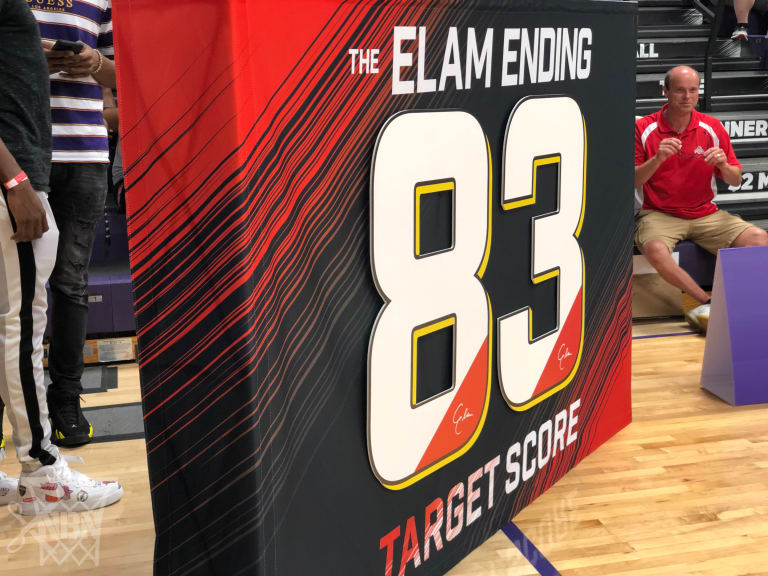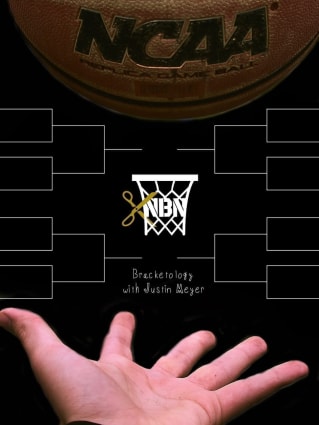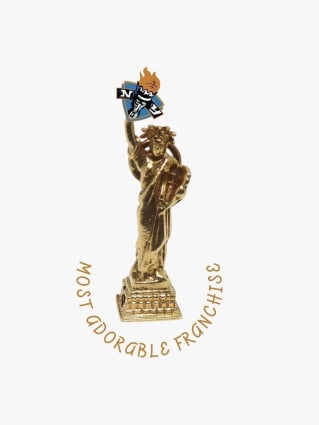On the University of Dayton campus in the spring of 2004, Nick Elam and his friends sat at home watching the Elite Eight, the holy grail of sports for the college basketball buffs. The game that day was No. 1 seed Duke versus No. 7 seed Xavier, and intense back-and-forth affair that captivated the basketball world for 39 minutes.
Then, the final minute rolled around, and Nick Elam, his friends and everyone else glued to the game watched Duke salt it away at the free-throw line, with a handful of anticlimactic timeouts and commercials to serve as the cherry on top of the now-melted sundae.
“We were looking around at each other saying, ‘It’s really weird the way the game just deteriorates at the end,’” Elam remembered. “It changes so much. We talked about ways to fix it that afternoon, tossing around ideas, but didn’t have any ideas that were viable at that time, so we tabled that discussion.”
Three years later, Elam was still searching for the answer to their question until it came to him.
“It was March of 2007 when I thought of this concept,” Elam said. “All these phenomena are attributed to the game clock’s influence, so maybe if you got rid of the game clock at the end of the game, maybe that would address these phenomena.”
He devised what he called the Hybrid Duration Format: a mostly regular arrangement with the game clock operating as normal until it neared the end. At a certain point, the clock would shut off, and a constant number would be added to the leading team’s score. That sum would become the target score, and from there, it would be a race between the sides to reach it first and claim victory.
Elam put his notion to the test, doing extensive research into the idea. After he convinced himself of its capability, he began putting it out into the world.
Without connections into the basketball world, Elam cold contacted people in control of tournaments, events, leagues and camps across the country. When he received responses, he said the majority would tell him major changes like that don’t happen often or quickly in basketball, but nobody ever pointed out a fatal flaw to the format. Even with the rejections, that gave Elam confidence.
“If somebody really wanted to shut this whole thing down, they would have said, ‘Hey, this is why this will not work,’” Nick Elam explained. “But instead, it was more, ‘Hey, I don’t know if we’re ready for this kind of change,’ something like that. That was encouraging to me. These are people immersed in the basketball world – coaches, executives, organizers, whatever it might be – and nobody was able to point out why it wouldn’t work other than just people aren’t quite ready for that type of change. That was exciting to me.”
But one organizer was immediately intrigued.
In August 2016, coming up on a decade after Elam devised his ending, he sent another batch of emails out fit with detailed PowerPoint presentations. One of them went to Jon Mugar, the founder and CEO of The Basketball Tournament (TBT), a 64-team summer tournament with a winner-take-all prize of $2 million, proposing his idea.
“I had never met Jon Mugar in my life,” Elam said. “In fact, I didn’t even know who I was sending it to. I was just sending it to a general [email protected] email address.”
But it was Mugar who responded and digitally introduced himself. Elam said that in his initial response, Mugar used the word “brilliant” to describe his idea.
Elam tried not to get his hopes up as the two stayed in touch for the following months. As the calendar turned to 2017, Mugar told Elam that TBT would implement his ending on an experimental basis for their preliminary rounds, known as the Jamboree.
There was only one issue: the name.
“They said they loved the concept, but they just had to do something about the name,” Nick Elam said. “They proposed the name Elam Ending. They asked me what I thought of it, and I thought, ‘That’s an honor, I love it.’”
And with that, the Elam Ending was born. Now two years later, the Elam Ending is used in all TBT games, and in 2019, the event changed its game ball to include Elam’s signature inscribed on the rock.
As it has grown in TBT and been exposed to a wider audience, Elam said more and more leagues and events are incorporating his idea, including some colleges and junior colleges using it at practices to ramp up the intensity.
“At that grass roots level, the format is gaining acceptance and gaining steam,” he said.
The success of the Elam Ending at TBT and its wider use at other levels of basketball doesn’t mean it’s not a work in progress. Elam said he is always looking for ways to improve it, and that happened most recently this summer.
In 2018, seven points were added to the leading team’s score to formulate the target score in TBT games. In 2019, the number rose to eight after Elam reviewed the data from the 2018 edition and more. He said as of right now, he thinks eight is probably the right number for TBT moving forward, but that doesn’t mean new information or a shift in the sport will keep it so.

To even have the opportunity to tweak the format based on real, high-level results utilizing his ending is a blessing. For almost 10 years, Elam peddled his work without any hooks. But he continued to buy into his idea, scouring about 2,900 basketball games to refine and confirm his beliefs.
He promised himself long ago that he would never rely on this idea for his livelihood. Elam has always been a basketball, and sports in general, buff, and his only goal was to make the game better. This was and has remained a hobby, which allowed him to be more patient for those years without nibbles.
“This whole time early on, it was just me speaking on behalf of the concept,” he explained. “I really thought that once somebody gave the concept a chance to speak for itself, it was going to gain its acceptance. If you had told me in 2007 it was going to take 10 years before this will be implemented for the first time, I don’t know if I would have continued that long. But for that whole time, I thought I was just one day away, one email away, from getting somebody to embrace it.”
It seems Elam was right about that, but his ending is still far from mainstream basketball usage. That’s okay, though. There’s no rush. What’s important to Elam is to continue the momentum and see how far it can go.
“This week, I’ve been contacted by a number of different coaches and people who organize tournaments and things like that letting me know that they’re going to implement the Elam Ending, asking questions about implementation, things like that,” Nick Elam said. “The concept is growing at that grassroots level. I worked, this is going on now 12-plus years, to get this independent project where it is now, and it’s finally gaining momentum. I’m not going to give up on this project now. Now, I want to see the project and the concept grow even more. As long as this project has life, as long as there is somebody implementing this format, I want to see it continue to be implemented even more. Ultimately, I would like to see it implemented at the highest levels of play: the NBA, the WNBA, NCAA Division I and the Olympics.”
This article was originally published August 6, 2019.







